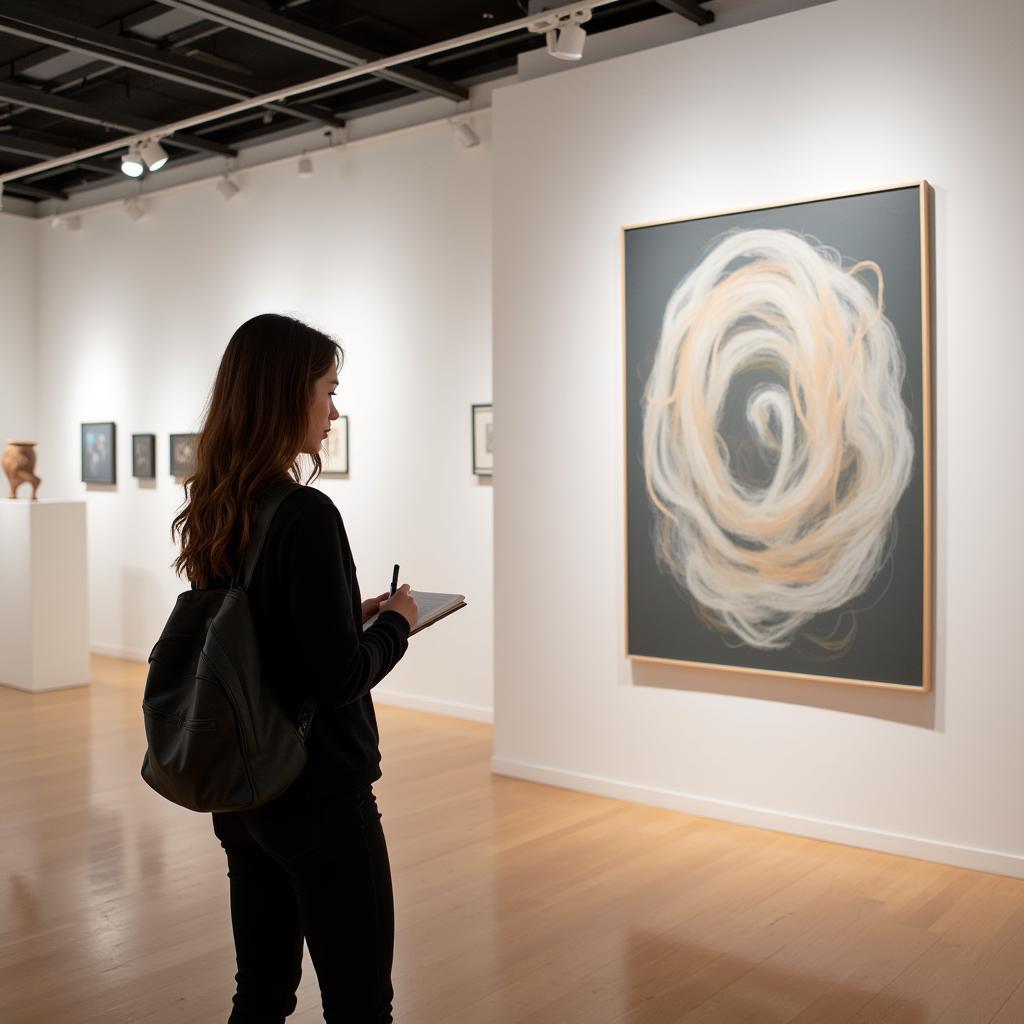describe a piece of art that inspired you is a common topic in IELTS Speaking tests, particularly in Part 2. This theme allows candidates to demonstrate their ability to describe visual elements, express emotions, and discuss cultural appreciation.
Part 1: Introduction and Interview Questions
Common questions examiners ask:
- Do you enjoy visiting art galleries?
- What type of art do you prefer?
- Have you ever created any artwork yourself?
Sample answer (Band 8-9):
“I frequently visit art exhibitions whenever I travel. I’m particularly drawn to contemporary installations because they often challenge conventional perspectives and provoke thought-provoking discussions. While I haven’t professionally created art, I dabble in sketching as a way to express my creativity.”

Part 2: Cue Card
Task
Describe a piece of art that left a lasting impression on you
You should say:
- What it was
- Where you saw it
- Why it impressed you
And explain how it influenced you
Sample Answer (Band 8-9)
“I’d like to tell you about Vincent van Gogh’s ‘The Starry Night,’ which I encountered in person at the Museum of Modern Art in New York. The painting absolutely captivated me with its swirling patterns and bold use of color.
What struck me most profoundly was how Van Gogh managed to transform a simple nighttime scene into something extraordinarily magical. The way he portrayed the turbulent sky with thick brushstrokes and vibrant blues created an almost supernatural atmosphere.
The painting resonated deeply with me because it demonstrates how perception shapes reality. Van Gogh didn’t just paint what he saw; he painted what he felt, which perfectly embodies the power of artistic expression.
This masterpiece has significantly influenced my own approach to creativity. It taught me that beauty isn’t just about precise representation but about conveying emotion and personal interpretation.”
describe a memorable book you read as a child similarly requires this level of detailed description and emotional connection.
Part 3: Discussion Questions
Q: How has modern technology changed the way we experience art?
Sample Answer (Band 8-9):
“Technology has revolutionized art accessibility in unprecedented ways. Virtual reality exhibitions now allow people to immerse themselves in artistic experiences from anywhere in the world. However, this digital transformation also raises intriguing questions about authenticity and the irreplaceable nature of experiencing art in person.”
Q: Should governments invest more in preserving traditional art forms?
Sample Answer (Band 8-9):
“It’s imperative for governments to allocate resources toward preserving traditional art forms as they represent our cultural heritage. These artistic traditions serve as bridges between generations and foster cultural identity. Moreover, they provide invaluable insights into historical perspectives and social evolution.”
Key Vocabulary and Expressions
- Aesthetically pleasing /esˈθetɪkli ˈpliːzɪŋ/ (adj): visually beautiful
- Mesmerizing /ˈmezməraɪzɪŋ/ (adj): captivating, spellbinding
- Intricate details /ˈɪntrɪkət ˈdiːteɪlz/ (n): complex, elaborate features
- Evoke emotions /ɪˈvəʊk ɪˈməʊʃənz/ (v): to bring forth feelings
- Cultural significance /ˈkʌltʃərəl sɪɡˈnɪfɪkəns/ (n): importance in cultural context
Similar to describe a book that left a lasting impression on you, these expressions help convey deep personal impact.
Examiner’s Tips
- Use specific art terminology appropriately
- Structure your response with clear introduction, body, and conclusion
- Include personal reactions and emotional responses
- Connect the artwork to broader themes or life lessons
- Practice describing various art forms using rich vocabulary
describe a movie you watched recently that had a twist ending requires similar descriptive skills and emotional engagement.
Remember to maintain eye contact and speak with natural intonation while discussing your chosen artwork. This demonstrates confidence and genuine interest in the subject matter.